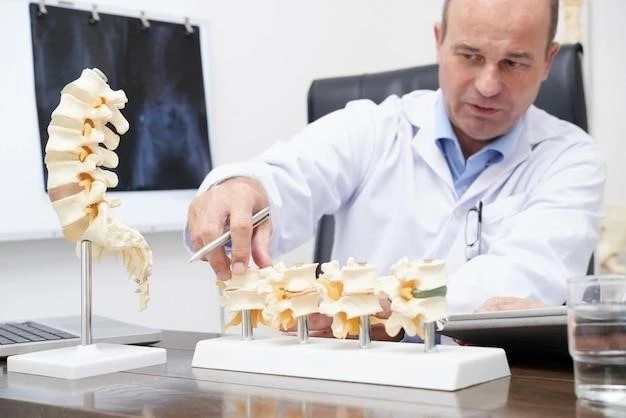Overview of Telecanthus with Associated Abnormalities
Telecanthus, also known as dystopia canthorum, refers to an increased distance between the inner corners of the eyelids (medial canthi)․ This abnormality can occur in isolation or in association with various genetic disorders such as Down syndrome, fetal alcohol syndrome, and others․ It may manifest as widely spaced eyes and facial structural abnormalities․ Surgical interventions are sometimes necessary to correct the physical features associated with telecanthus․
Definition and Characteristics of Telecanthus
Telecanthus, also known as dystopia canthorum, is the abnormal increase in the distance between the inner corners of the eyelids (medial canthi)․ It may be unilateral or bilateral and can be seen in various congenital disorders like Down syndrome, fetal alcohol syndrome, and others․ Telecanthus can occur as an isolated feature or in association with other eye abnormalities, impacting the visual appearance and sometimes requiring surgical correction․
Telecanthus is frequently linked to genetic disorders such as Down syndrome, fetal alcohol syndrome, Cri du Chat syndrome, Klinefelter syndrome, Turner syndrome, and Waardenburg syndrome․ These conditions often present with additional facial and ocular abnormalities, highlighting the diverse genetic etiologies that can contribute to the manifestation of telecanthus․
Common Genetic Syndromes Associated with Telecanthus
Telecanthus often accompanies genetic disorders like Down syndrome, fetal alcohol syndrome, Cri du Chat syndrome, Klinefelter syndrome, Turner syndrome, and more․ These syndromes present with diverse facial and ocular manifestations, emphasizing the genetic complexity linked to telecanthus․
Description of BPES and Its Ocular Abnormalities
Blepharophimosis, Ptosis, and Epicanthus Inversus Syndrome (BPES) is characterized by a narrowing of the eye opening (blepharophimosis), droopy eyelids (ptosis), and an upward fold of the skin near the inner corner of the eye (epicanthus inversus)․ Individuals with BPES may also present with an increased distance between the inner corners of the eyelids (telecanthus)․ Surgical interventions may be necessary to address these ocular abnormalities․
Relationship Between BPES and Telecanthus
Blepharophimosis, Ptosis, and Epicanthus Inversus Syndrome (BPES) often coexists with telecanthus, where individuals have a narrowing of the eye opening, droopy eyelids, and an upward skin fold near the inner corner of the eye․ The increased distance between the inner corners of the eyelids seen in telecanthus can be a distinctive feature in individuals with BPES․
Diagnosis and Evaluation of Telecanthus
Diagnosing telecanthus involves assessing the distance between the inner corners of the eyelids (medial canthi)․ Evaluation typically includes a detailed physical examination to determine if the abnormality is isolated or associated with genetic syndromes․ Imaging studies may be conducted to further evaluate the extent of telecanthus and its potential impact on visual health․
Clinical Assessment and Physical Examination for Telecanthus
Diagnosing telecanthus involves evaluating the distance between the inner corners of the eyelids․ A comprehensive physical examination helps determine if telecanthus is an isolated condition or associated with genetic syndromes․ Understanding the craniofacial features and any ocular abnormalities associated with telecanthus is essential for accurate diagnosis and treatment planning․
Imaging Studies and Diagnostic Criteria for Telecanthus
Imaging studies play a crucial role in diagnosing telecanthus by providing detailed insights into the structural abnormalities associated with the condition․ Diagnostic criteria for telecanthus include measuring the distance between the inner corners of the eyelids, assessing any craniofacial abnormalities, and identifying potential genetic syndromes that may be linked to telecanthus․
Surgical Correction of Telecanthus
Surgical interventions target correcting telecanthus and associated abnormalities to enhance facial aesthetics and functional outcomes․ The procedures aim to address the structural abnormalities contributing to the widened distance between the inner corners of the eyelids, ultimately improving the patient’s ocular and cranial health․
Procedures for Correcting Telecanthus and Associated Abnormalities
The surgical correction of telecanthus involves procedures aimed at addressing the increased distance between the inner corners of the eyelids․ Surgeons may perform techniques to correct the underlying structural issues contributing to telecanthus, often improving both the aesthetic appearance and functional aspects of the affected area․
Outcomes and Complications of Surgical Interventions
Surgical correction of telecanthus typically yields positive outcomes, improving both the aesthetic appearance and functional aspects of the affected area․ However, as with any surgical procedure, there are potential complications such as infection, scarring, asymmetry, or recurrent telecanthus that may require further intervention․
Barber-Say Syndrome and Telecanthus
Barber-Say Syndrome (BSS) is a rare congenital condition characterized by unique facial and craniofacial abnormalities, including skin hyperlaxity, macrostomia, eyelid deformities, ocular telecanthus, and dental anomalies․ These distinctive features set BSS apart as a complex genetic syndrome with a range of physical manifestations impacting facial structure and aesthetics․
Overview of Barber-Say Syndrome and Its Features
Barber-Say Syndrome (BSS) is a rare congenital condition characterized by a unique combination of craniofacial and facial abnormalities․ Individuals with BSS may exhibit features such as severe hypertrichosis, skin hyperlaxity, macrostomia, eyelid deformities, ocular telecanthus, and skeletal anomalies․ These distinctive characteristics distinguish BSS as a complex genetic syndrome with a wide range of physical manifestations impacting various aspects of facial structure and aesthetics․
Connection Between Barber-Say Syndrome and Facial Abnormalities
Barber-Say Syndrome (BSS) is characterized by a complex array of facial anomalies, including skin hyperlaxity, macrostomia, eyelid deformities, ocular telecanthus, and dental abnormalities․ These features highlight the intricate relationship between BSS and the unique facial characteristics that individuals with this syndrome exhibit, underscoring the diverse impact of BSS on facial structure and aesthetics․
Telecanthus, characterized by an increased distance between the inner corners of the eyelids, must be distinguished from true hypertelorism, which involves a broader measurement between the eyes․ Additionally, other palpebral anomalies may be associated with telecanthus, necessitating a comprehensive evaluation to determine the specific underlying condition․
Distinguishing Between True Hypertelorism and Telecanthus
Telecanthus, which involves an increased distance between the inner corners of the eyelids, must be accurately differentiated from true hypertelorism, where the entire eyes are set farther apart․ Understanding this distinction is crucial in determining the precise diagnosis and appropriate management for patients presenting with various palpebral anomalies;

Differential Diagnosis of Telecanthus
Telecanthus needs to be differentiated from true hypertelorism, where the complete eyes are set farther apart․ Additionally, various palpebral anomalies may be present alongside telecanthus, requiring meticulous assessment to identify the underlying condition accurately․
Craniofacial Findings in Patients with Telecanthus
Individuals with telecanthus often exhibit a unique set of craniofacial abnormalities․ The increased distance between the inner corners of the eyelids may be associated with other facial features, highlighting the correlation between telecanthus and overall craniofacial structure․ Understanding these findings is crucial for comprehensive patient evaluation and management․
Craniofacial Abnormalities and Telecanthus Correlation
Telecanthus in patients often accompanies a variety of craniofacial abnormalities․ The correlation between telecanthus and these facial anomalies underscores the importance of recognizing the interconnectedness between telecanthus and the overall craniofacial structure․ This relationship aids in comprehensive patient assessment and management decisions․
Impact of Telecanthus on Visual and Cranial Health
Telecanthus can have implications for both visual and cranial health․ The abnormal distance between the inner corners of the eyes can affect visual coordination, while the associated craniofacial abnormalities may influence overall cranial structure and development․ Understanding these impacts is crucial for the effective management of patients with telecanthus․
Non-syndromic telecanthus occurs as an isolated condition without associated genetic disorders․ Understanding the etiology and appropriate management of non-syndromic telecanthus is crucial for addressing the specific needs of individuals with this condition and ensuring optimal outcomes․
Non-Syndromic Telecanthus and Its Implications
Non-Syndromic Telecanthus, which occurs independently without associated genetic conditions, requires specific attention for accurate diagnosis and tailored management․ Understanding the origin and impact of non-syndromic telecanthus is essential for addressing the unique needs of affected individuals and achieving successful outcomes․
Long-Term Effects and Quality of Life Considerations
Understanding the long-term effects of non-syndromic telecanthus on visual function and overall quality of life is essential for providing holistic care to individuals with this isolated condition․ Assessing the impact of non-syndromic telecanthus on daily activities and social interactions can guide patient-centered management strategies and improve outcomes over time․
Traumatic Telecanthus and Nasofacial Injuries
Traumatic telecanthus refers to an increased distance between the inner corners of the eyelids resulting from injuries to the nasal-orbital-ethmoid complex․ Diagnosing traumatic telecanthus involves measuring deviations from normative values and addressing such pathology to restore facial harmony and function․
Causes and Symptoms of Traumatic Telecanthus
Traumatic telecanthus, resulting from injuries to the nasal-orbital-ethmoid complex, exhibits symptoms such as increased distance between the inner corners of the eyelids․ Diagnosing traumatic telecanthus involves precise measurements to assess deviations from normative values and determine appropriate treatment strategies․
Treatment Approaches for Nasoethmoidal Trauma and Telecanthus
Managing nasoethmoidal trauma and traumatic telecanthus requires a comprehensive treatment plan․ Surgical interventions may be necessary to address the structural abnormalities resulting from the injury and restore facial aesthetics and function․ Collaborative efforts with ophthalmologists and facial reconstructive surgeons can optimize the outcomes for patients with traumatic telecanthus․

Research and Advancements in Telecanthus Studies
The abnormal distance between the inner corners of the eyelids (telecanthus) has been a focus in recent research․ Current studies aim to explore the genetics underlying telecanthus, innovative diagnostic methods, and novel therapeutic approaches for correcting facial anomalies associated with this condition․
Current Trends in Telecanthus Research and Genetics
Recent research focuses on the genetics and treatment of telecanthus․ Studies explore the underlying causes of telecanthus, innovative diagnostic tools, and emerging therapies for correcting facial abnormalities associated with this condition․ The advancements aim to enhance understanding and management approaches for individuals with telecanthus․
Novel Therapies and Surgical Innovations for Telecanthus Correction
Ongoing advancements in telecanthus research have led to the development of innovative therapies and surgical techniques for correcting facial anomalies associated with this condition․ These novel approaches aim to optimize outcomes for patients with telecanthus by providing targeted and effective treatment options;
Telecanthus, with an increased distance between the inner corners of the eyelids, can be associated with various genetic syndromes and traumatic injuries, resulting in craniofacial and ocular abnormalities․ Recent research focuses on genetics, diagnostics, and novel therapies, highlighting the importance of comprehensive assessment and patient-specific management approaches․
Summary of Key Findings on Telecanthus and Associated Abnormalities
Telecanthus is a condition characterized by increased distance between the inner corners of the eyelids, often associated with genetic disorders or traumatic injuries․ Current research focuses on genetics, diagnostics, and novel therapies to enhance management strategies for individuals with telecanthus․
Areas for Further Investigation and Collaborative Efforts
Future research directions in telecanthus studies include exploring the genetic underpinnings of the condition, refining diagnostic protocols, and developing collaborative efforts among multidisciplinary teams to advance treatment options and improve outcomes for individuals affected by telecanthus and associated abnormalities․
